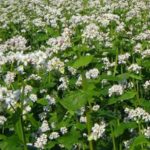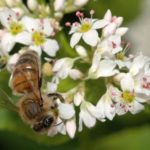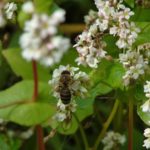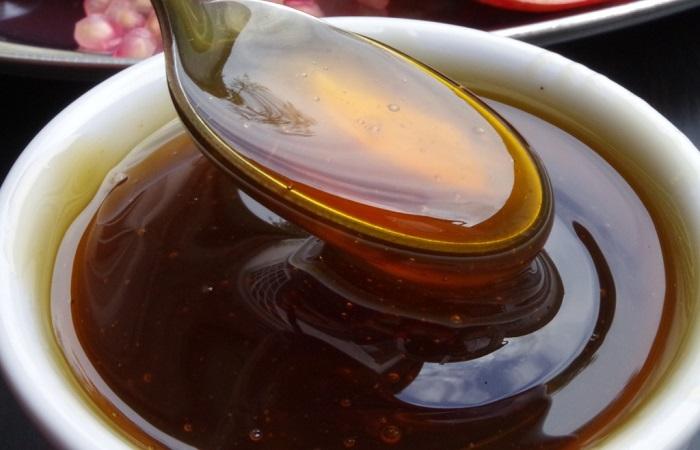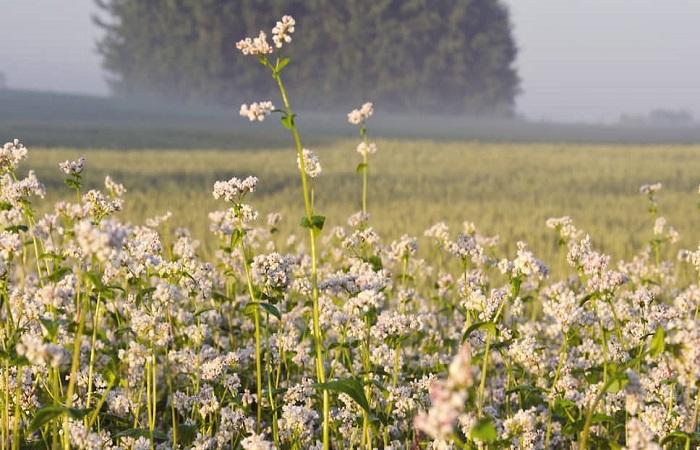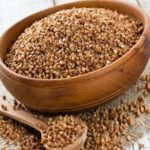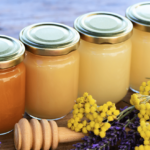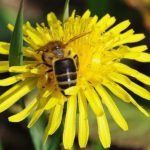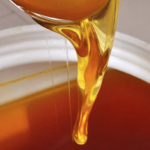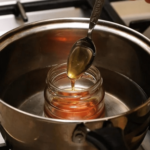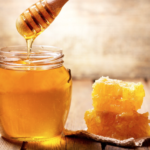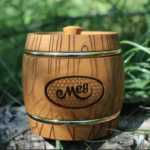Buckwheat is a genus of plants from the family of the same name, consisting of 26 species. It comes from southwest China, from where it spread throughout Asia and Europe more than 5 thousand years ago. Beekeepers are especially interested in when buckwheat, used as a honey plant, blooms, because the honey obtained from such fields has a characteristic taste, appearance and high quality, which allows it to be used not only as a tasty product, but also as a substance with healing properties.
Description of culture
Buckwheat is an annual or perennial plant with a height of 10 to 100 centimeters. It has bare, straight, branched stems with alternately planted arrow-shaped leaves. Buckwheat has bisexual flowers that are pinkish-white, greenish or cream in color. The fruits are triangular nuts up to 6 millimeters long.
Buckwheat is a valuable supplier of grain, which is traditionally used in Russia and most countries of the former Soviet Union, although the culture reached these lands relatively late - during the Tatar-Mongol invasion. The plant and cereals from it received their Russian name - buckwheat - due to the Byzantine or Greek route of entering the territory of Rus'.
Nowadays, buckwheat is actively used not only as a cereal crop, but also as a honey plant, which produces valuable and especially tasty honey, which stands out against the background of all other types of bee honey. Buckwheat itself, its grain - buckwheat - is distinguished by a rich mineral composition, as well as the presence of vitamins B, PP, E, various organic acids, easily digestible proteins, starch, sugar, oil, and so on.
Types of buckwheat
There are many varieties of buckwheat, but the most common and popular are two types: seed, or ordinary, and Tartary.
Sowing
This type of buckwheat is also called edible or cereal, since it is from it that the well-known buckwheat is obtained. This is a grain and honey plant, long ago introduced into cultivation and distributed throughout Asian and European territory. It is sown as a honey plant on light sandy loam soils. When it blooms, bees collect a bountiful harvest of nectar and greenish-yellow pollen.
Harvesting takes place late due to the fact that buckwheat fruits ripen unevenly, at the end of August-September.Buckwheat is used to create various dishes in many countries, but nowhere has it achieved such popularity as in the territory of the former USSR.
Tatar
Tatarian buckwheat, kirlyk, siberian grouse is an annual plant, wild, common as a weed in crops of buckwheat or grain crops. A heat-loving and moisture-loving plant, it quickly dies with minor frosts. Prefers nutritious, well-fed and moist soils, does not tolerate drought.
Tartary buckwheat is widespread in East Asian countries - China, Japan, India and so on. On the territory of Russia it grows in the European part, in Western and Eastern Siberia, in the Far East. As a honey plant, it is an object of attention only when it grows over large areas. It produces “wild” buckwheat honey, which can be considered medicinal, since it is most often obtained in environmentally friendly places far from any production and mass settlement of people.
Features of cultivation
All representatives of the genus are characterized by increased moisture-loving properties and demands on the composition and permeability of soils. Buckwheat grows best on light but nutritious sandy loam soils that are permeable to moisture but do not create stagnant rainfall. This is a late-ripening crop, so rain and early frosts may interfere with harvesting.
Planted crops are susceptible to attack by insect pests and also suffer from a number of fungal diseases, but voles do not live in buckwheat fields, since they cannot feed on the shoots of the plant due to the toxic coumarin compounds they contain.
Honey productivity of buckwheat
The amount of honey obtained from buckwheat crops completely depends on two main conditions:
- Favorable weather.
- The presence of an active summer of bees.
Both of these conditions are interrelated. In wet weather, bees fly little, only in the absence of rain or fog. If the wet period occurs during the active flowering of the crop, then the bees will not be able to collect much nectar and pollen, and there will be a crop failure for buckwheat honey.
In a good year, up to 80 kilograms of honey can be collected from a hectare of abundantly flowering field. However, in drought and heat, bees also fly poorly, so the level of buckwheat honey collection is never constant.
Buckwheat honey
This variety of bee honey differs from other varieties in a number of characteristics. It has a rich reddish-brown, dark hue, pronounced aroma and a specific spicy taste. While such honey is fresh, it is liquid and dark; as it is stored, it thickens and becomes lighter.
Buckwheat honey contains dozens of proteins, minerals and more iron than other varieties. Thanks to these qualities, it is actively used for the treatment and prevention of colds, inflammation in the oral cavity, and also as an antiseptic. Honey can be used for cosmetic purposes, for the treatment of skin diseases, healing of minor wounds, scratches, rashes, including suppurating ones. Honey applications will also help heal long-lasting trophic ulcers.
Period and duration of flowering for honey collection
Buckwheat blooms for a month - 40 days in midsummer. The flowering period depends on weather conditions and the area where the plant is grown. In central Russia, this time falls in the middle - end of June.
In order to serve a hectare of crops, you will need to place at least 3-4 bee colonies in close proximity.Hives should be located as far apart as possible to reduce competition between bee colonies. Experienced beekeepers who grow buckwheat specifically for honey sow it twice with an interval of 2 weeks. This allows you to prolong the flowering process and increase the production of a valuable product.
Beneficial features
In addition to the fact that buckwheat is an excellent honey plant, it produces an excellent and healthy product - buckwheat. It comes in several types, of which the most prized are kernels - whole grain cereals, as well as green or unroasted buckwheat.
This product has high nutritional value and is a low-calorie product, which allows it to be used in diets for people who want to lose weight. Nutritional, taste and beneficial characteristics make buckwheat an excellent dietary dish, which is used even to feed sick and weakened people.
This is due not only to the composition of buckwheat, but also to its easy and rapid absorption by the body. Porridge and other dishes do not irritate the digestive system, are quickly digested and saturate the body with proteins, carbohydrates, minerals and vitamins.
Buckwheat is used not only for porridges, but is also suitable for creating various dishes - soups, side dishes, fillings for cutlets, zraz, meatballs, stuffing and minced poultry, as well as in the form of flour for pancakes, pancakes, Japanese soba noodles. Buckwheat flour does not contain gluten, so it can be used to feed people with celiac disease - gluten intolerance.
However, it must be taken into account that due to the lack of gluten, buckwheat flour does not rise, so it is combined with wheat flour to make pancakes or Japanese noodles.



